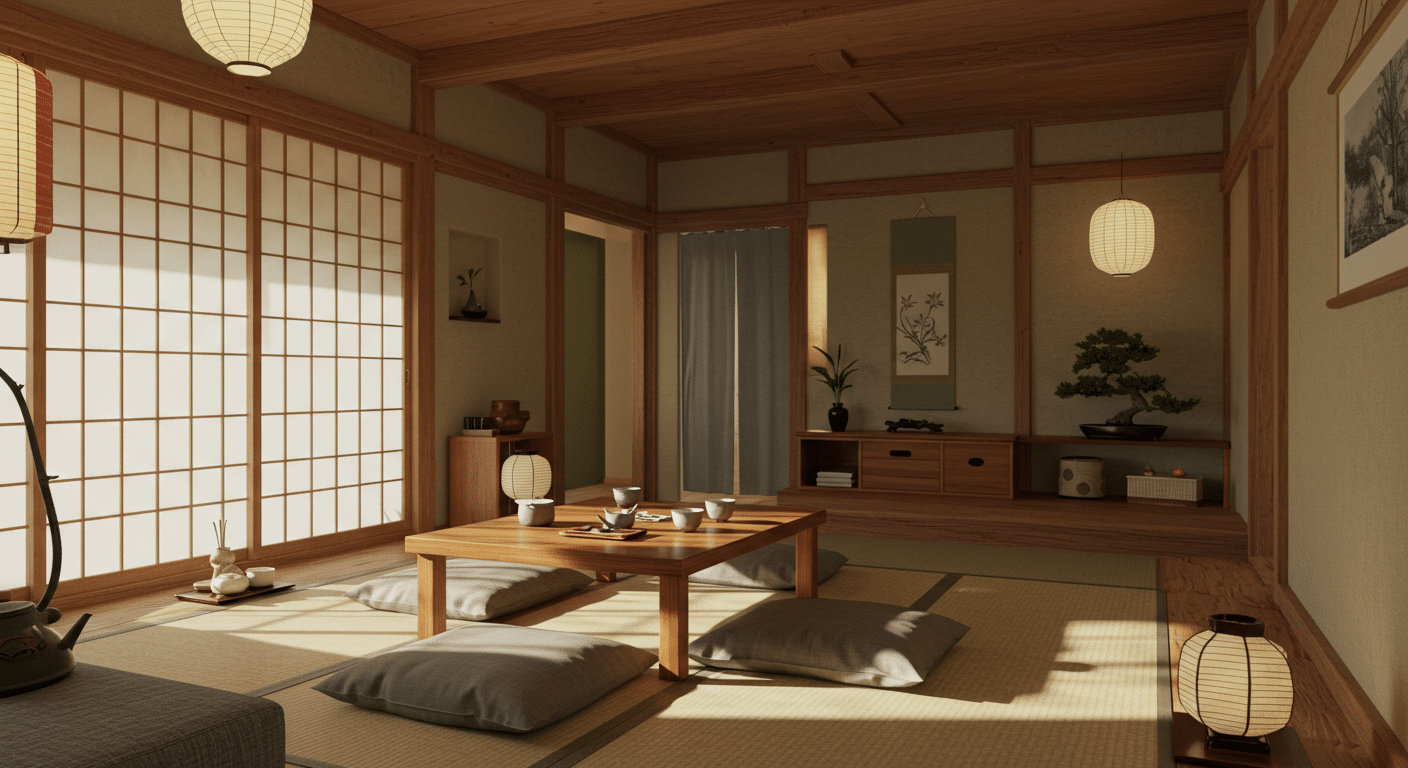There’s something about Japanese design that just feels right, especially when you’re trying to squeeze life into a tiny house. The harmony, the simplicity, the way every single piece seems to belong there. Like it’s been waiting for you all this time. Whether it’s the soft curves of shoji screens or a chubby bonsai tree on a floating shelf, Japanese-inspired living rooms bring a calming vibe most of us crave. Especially when space is at a premium.
So if your living room is more of a cozy corner than a sweeping hall—perfect. Let’s dive into 22 Japanese-inspired tiny house living room ideas that don’t just look good… they feel good.
1. Let Nature Sneak In (And Stay for Tea)
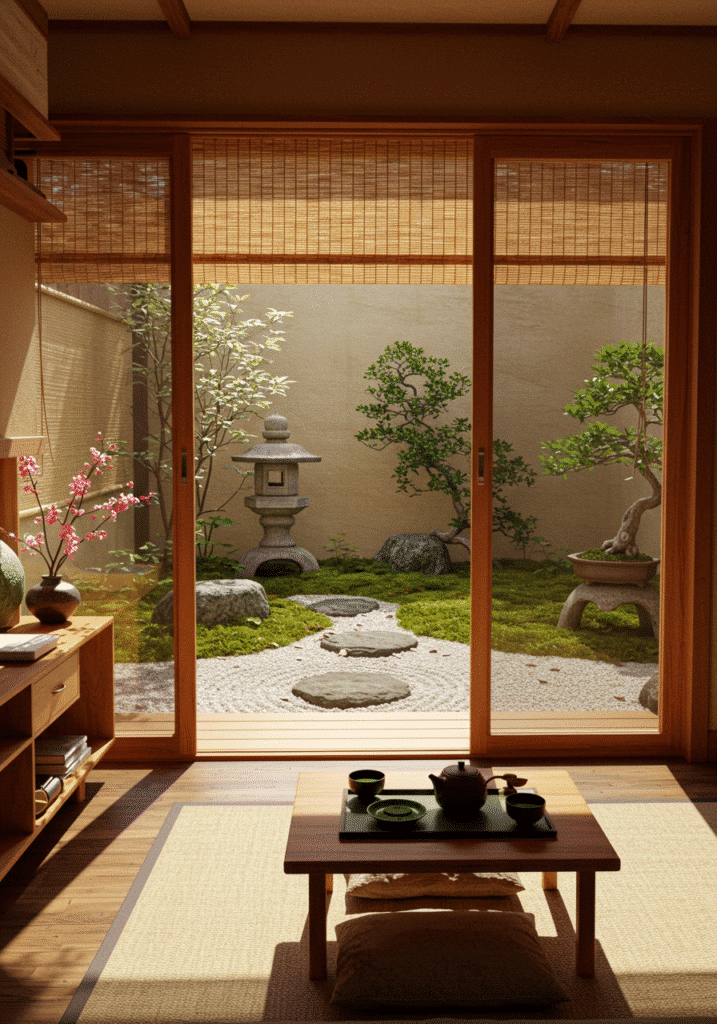
Japanese homes don’t shut nature out—they let it wander in and get comfy. In your tiny living room, this means opening up to natural elements. Use large windows or even just one window that opens wide, framing a tree like it’s a painting. Add a sprig of eucalyptus in a glass jar. That’s enough.
A single bonsai on a wooden stool is basically your new best friend. Or place a little potted bamboo on the floor—yep, floors are sacred here too. The idea is to blend in with the outside, not block it off. Plants don’t just sit there; they balance things out. Light matters too. Let it spill in freely, don’t fight it with heavy drapes. Even shadows should be welcome.
2. Shoji Screens That Slide Like Butter
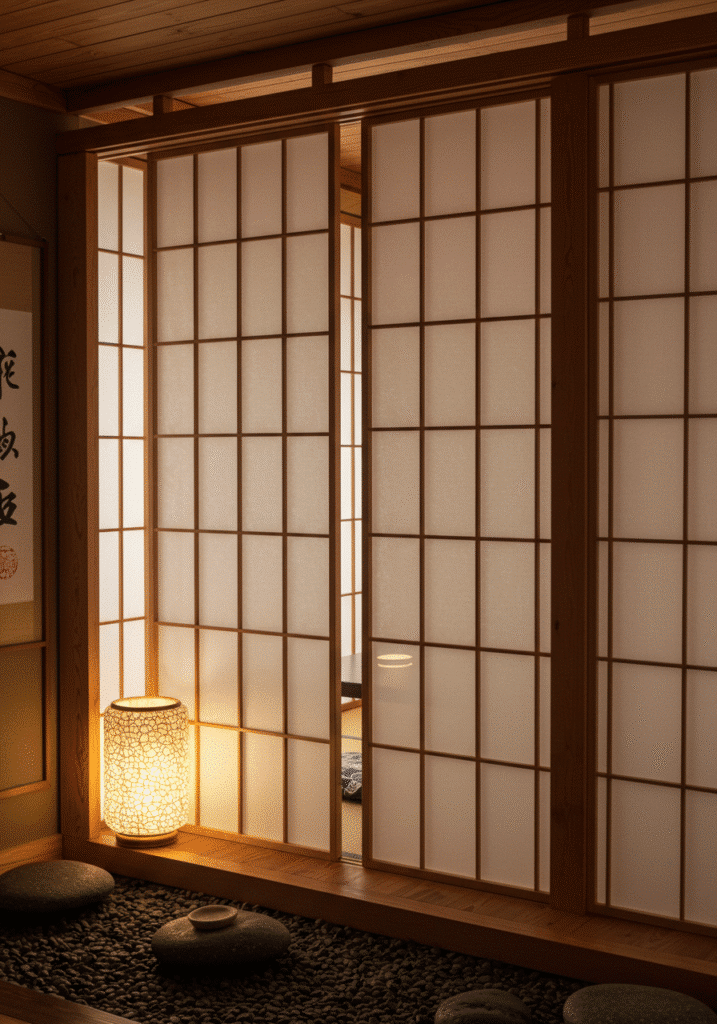
Shoji screens aren’t just doors. They’re mood changers. And, oh, they slide, not swing, which is a blessing when your sofa already touches your fridge. Shoji panels are made with translucent paper and wooden lattices, creating that soft glow when sunlight hits.
Stick one behind your couch like an art piece, or actually use one as a room divider between your kitchen and living area. You’ll feel like you’re in a Kyoto ryokan even if you’re in a Brooklyn studio. The paper is so thin you almost hear silence through it.
They’re lightweight, flexible, and kind of addictive. Once you get one, you’ll want ‘em everywhere. Plus, they make a great filter for LED lights at night, giving everything a cozy rice-paper glow.
3. Floor Seating? Absolutely Yes.
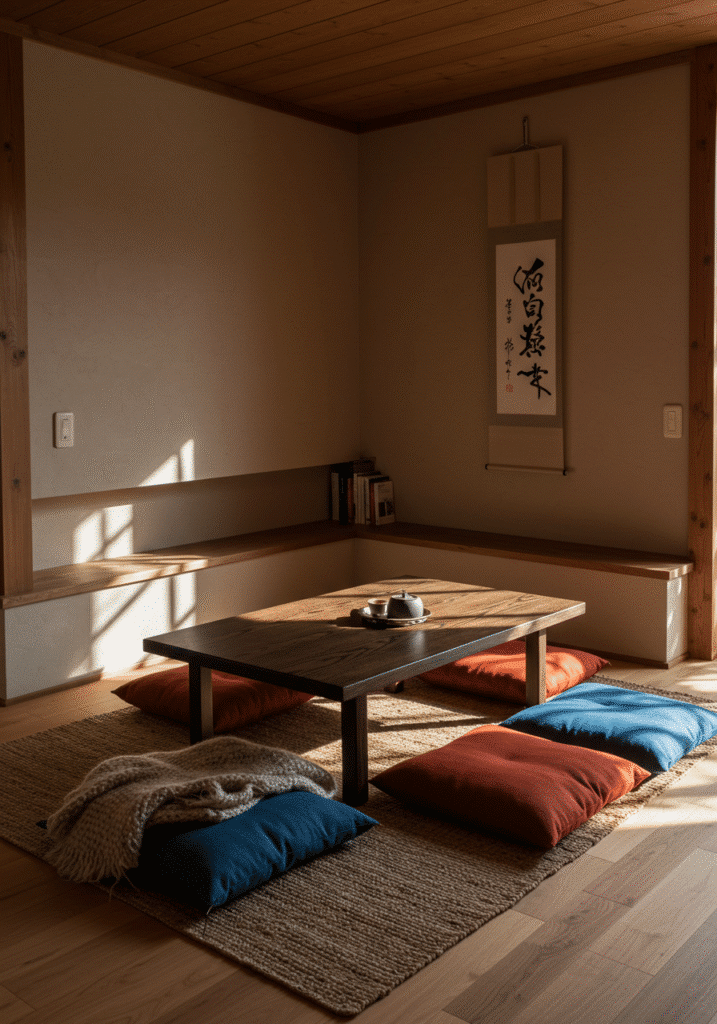
Furniture? Who needs legs? In Japanese homes, the floor is the furniture. Tiny houses love this idea. Use tatami mats, zabuton cushions, or even a floor-level sofa to create a nest you won’t want to leave.
Eating, reading, meditating, bingeing anime—it all happens down there. Keep a small chabudai (short-legged table) in the center and some comfy pillows around. Bonus: no stubbed toes on table legs. Your living room transforms into a flexible space that’s intimate and warm.
Also, something wild happens when you sit on the floor regularly. You slow down. You breathe deeper. Not kidding. It’s like your heartbeat remembers how to hum.
4. Neutral Colors Are the Real MVPs

Japanese interiors live in the calm zone. No neon pink sofas or violently patterned rugs. Think creamy whites, warm woods, soft greys, pale greens. These aren’t boring—they’re intentional.
Use them to create contrast through texture, not color. Mix a linen cushion with a wool throw, next to a smooth cedar wood bench. Every color whispers. No one’s yelling here.
Your tiny house will feel way more open and airy when your colors are toned down. Go matte, not glossy. Let light bounce softly, not like a disco ball.
5. Tiny Tokonoma, Big Vibes
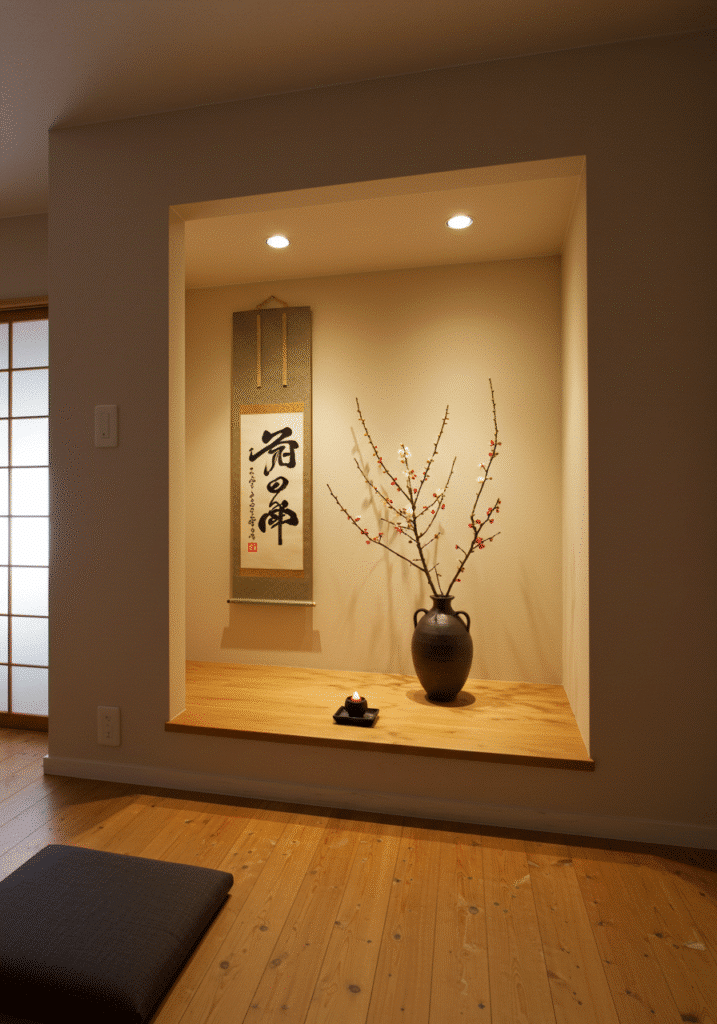
Tokonoma is like a sacred little shelf nook in traditional Japanese rooms. Usually, it holds a hanging scroll and maybe a vase or figurine. You can totally fake one in your tiny house.
Just carve out a small wall corner or niche. Put a floating shelf there. Add a calligraphy piece, a handmade ceramic, or a seasonal branch. Rotate what’s there. This isn’t decoration—it’s ritual. It reminds you to pause and notice.
You don’t need to overfill it. In fact, the more space around the object, the more your eyes rest on it. And wow, does it make you feel calm.
6. Sliding Everything—Doors, Cabinets, Sanity
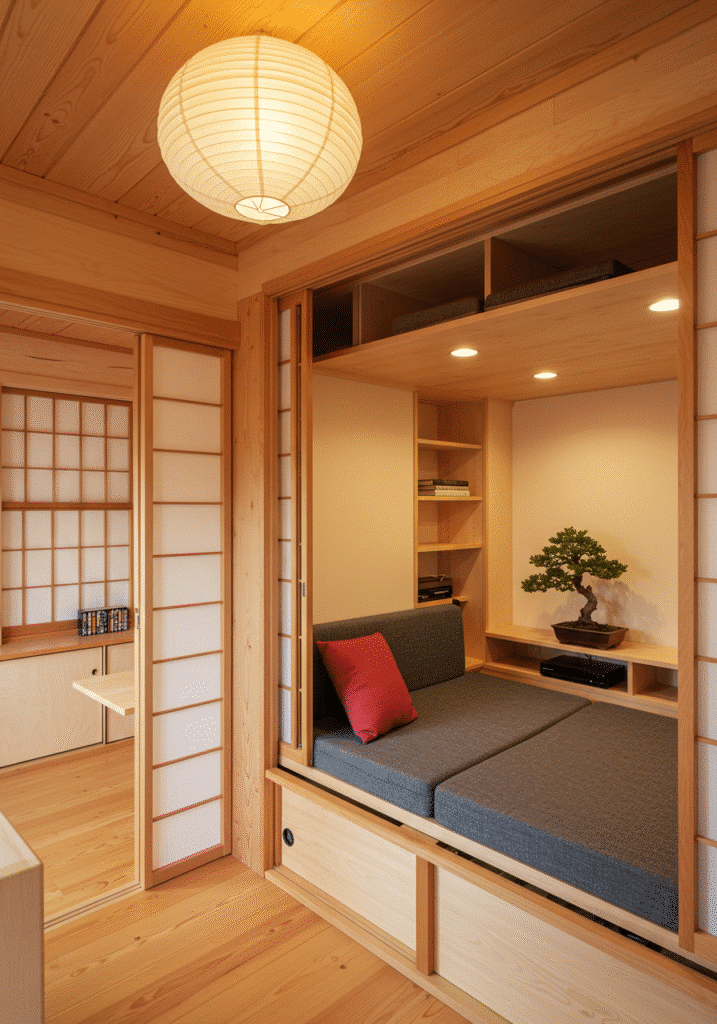
Here’s a tip straight from Japan’s spatial genius: make things slide, not swing. Doors, cabinets, hidden panels—if it opens by gliding, it saves room and looks elegant. Hinges are clunky. Slides are slick.
Use barn-door-style tracks or build thin partitions. In a tiny house, this literally opens up space that didn’t exist before. Plus, there’s something kinda poetic about the quiet swish of a sliding door.
No loud bangs. No slamming. Just shhhhkkk. Satisfaction.
7. Go Low, Stay Grounded
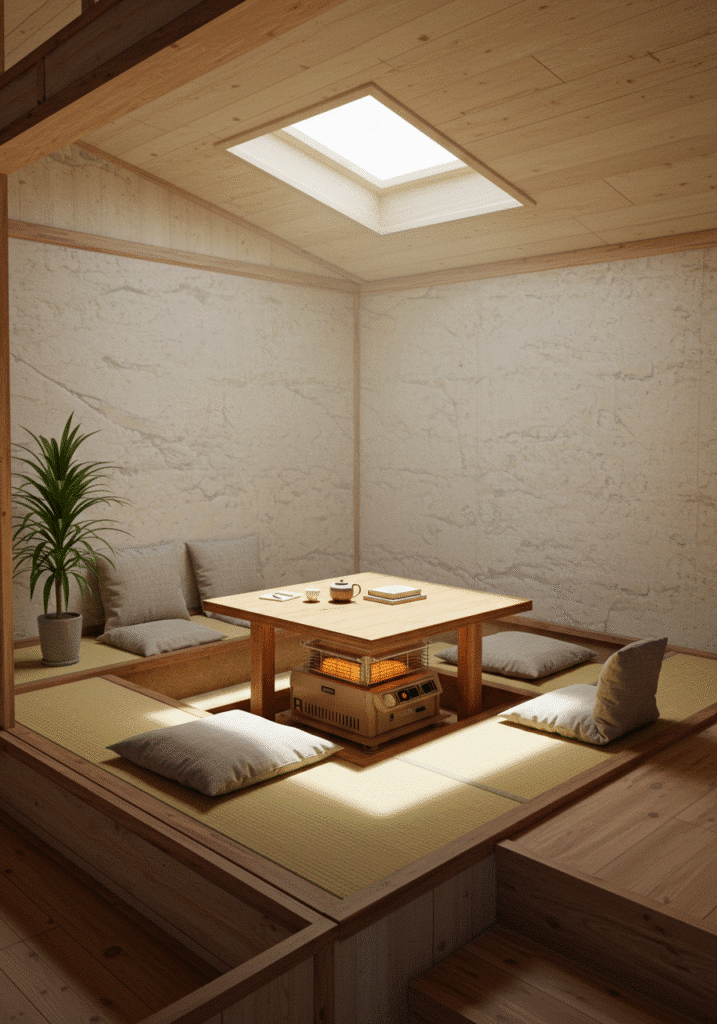
Everything in a Japanese-inspired room is a little… shorter. It’s not shrinking, it’s humbling. A low-profile couch, a short bookshelf, a squat coffee table—it pulls your eye down and makes ceilings feel taller.
It also makes you feel closer to the earth. More balanced. Like the room isn’t towering over you. Try placing your TV lower or even mounting it at cushion-level.
Mix in furniture that’s close to the ground but stylish. Go for wood with soft edges, natural stains, and no flashy hardware. Low is lovely.
8. Embrace the Emptiness (Really)
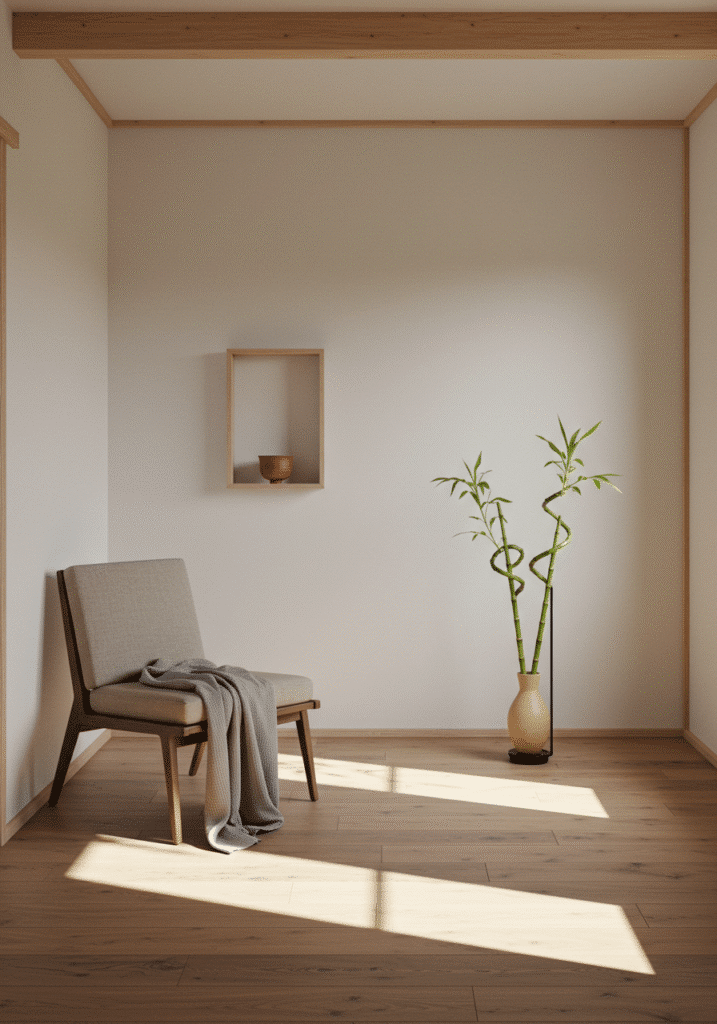
In Japan, there’s a concept called ma—the beauty of empty space. Western design wants to fill every gap. Japanese design honors the gaps. That empty corner? Don’t add a plant. Let it breathe.
Your eyes need a break. Your brain too. Negative space becomes part of the experience. In your tiny living room, resist clutter. Choose one artwork, not a gallery wall. One vase, not five. It’s scarier than it sounds, but man is it peaceful.
Emptiness becomes a canvas for your mood. A place for energy to flow. And somehow, you’ll end up feeling… fuller.
9. Wooden Everything (Not the Shiny Kind)
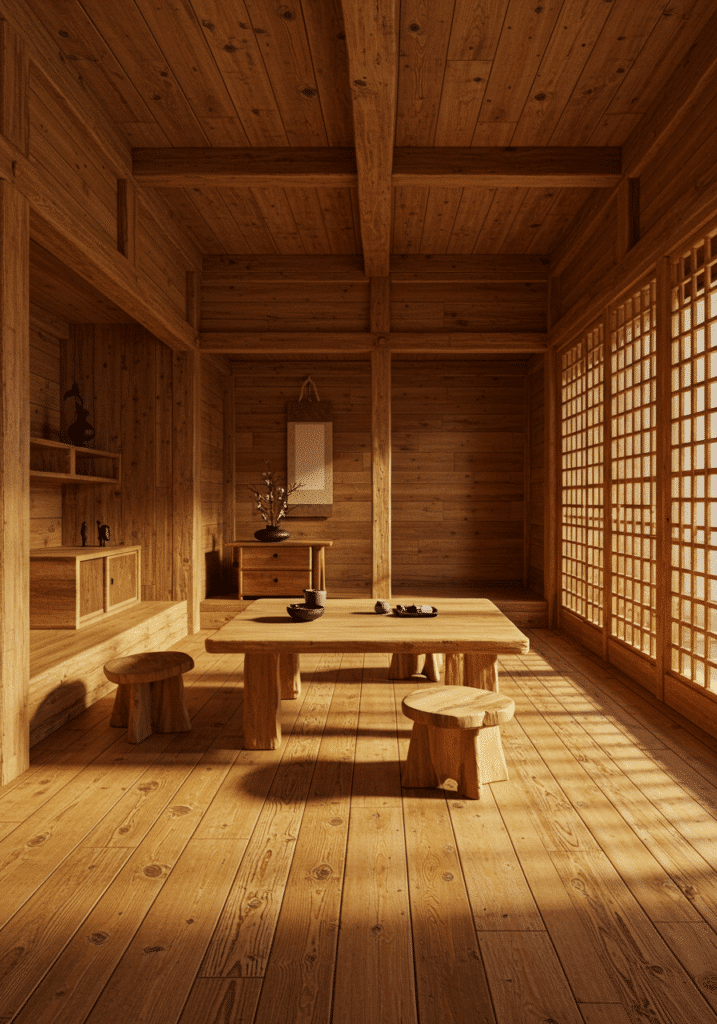
Wood in Japanese design isn’t polished within an inch of its life. It’s raw, warm, sometimes uneven. Cedar, hinoki, bamboo—each one has a smell, a feel, a vibe.
Add a slatted wood wall panel. Lay a thin wooden bench under a window. Even a wood-grain diffuser feels right. The more natural, the better.
Skip the plastic wood or fake finishes. Let knots show. Let grains zig-zag. It’s about celebrating the soul of the material, not hiding it behind varnish.
10. Tatami Mats, a Dream Underfoot
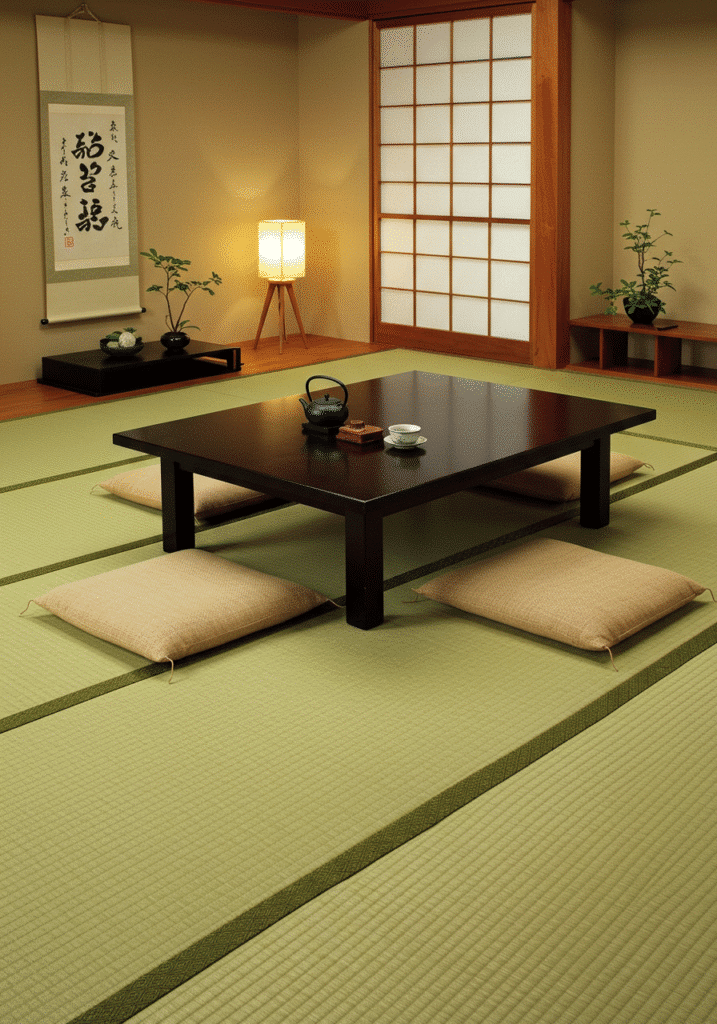
If you’ve never walked barefoot on tatami, you’re missing out on one of life’s quietest pleasures. They’re made from rice straw and feel springy but firm. Like memory foam invented by monks.
You don’t need a whole room of it—just one section. A raised tatami platform can become your reading nook or movie zone. Or layer them modular-style in a corner.
Their natural scent? Kinda grassy and nostalgic. Like summer at grandma’s, if your grandma was a Zen master.
11. Minimalist Doesn’t Mean Empty, It Means Mindful

People think Japanese design is all about less. It’s not. It’s about right. Right size, right shape, right vibe. So don’t go chucking everything out. Just keep what fits the rhythm of the space.
Choose items that feel good in your hands. A rough ceramic bowl. A smooth stone. Things that don’t need to scream to be seen.
It’s not minimalism—it’s meaning.
12. Noren Curtains = Instant Cool
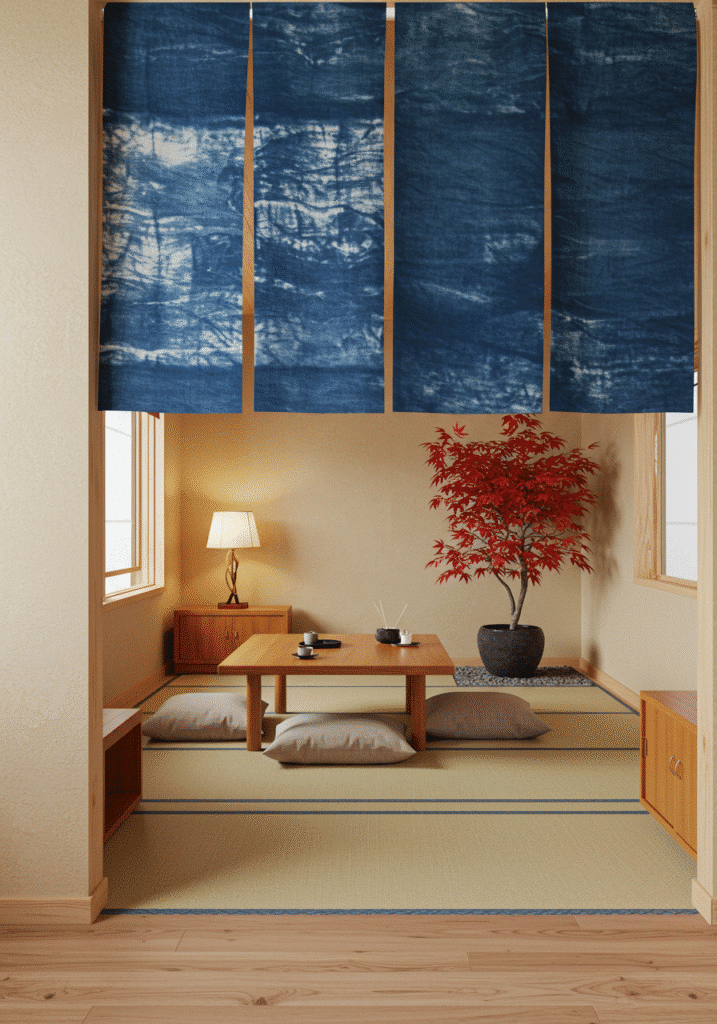
You’ve seen them hanging in ramen shops—short curtains that split down the middle. In tiny homes, they make charming dividers without blocking air or light.
Use them between your living room and kitchen, or hang one in the doorway for a little drama. Bonus: you get to pick cool designs. Kanji, koi fish, cherry blossoms… or even minimalist solid colors.
They flutter when you walk through. And somehow, everything smells cozier after.
13. Statement Lanterns that Don’t Shout.
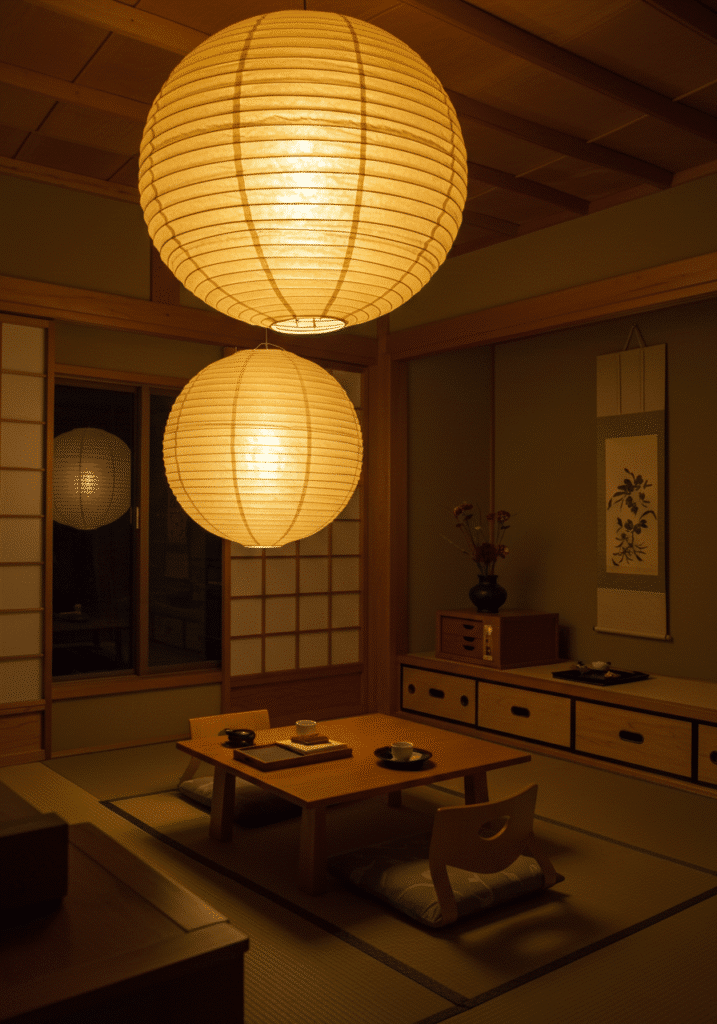
Overhead lighting in Japanese homes is usually soft and diffused. Think washi paper lanterns or round globe lights that glow like moons. They don’t dazzle. They invite.
One big lantern in the center of your tiny living room is all you need. Or go rogue and use multiple small ones hung at different levels. Mood lighting? Crushed it.
Try rice paper, linen, or even upcycled fabric. Just avoid the shiny metal stuff. You’re not building a spaceship.
14. Wall Niches That Tell a Story
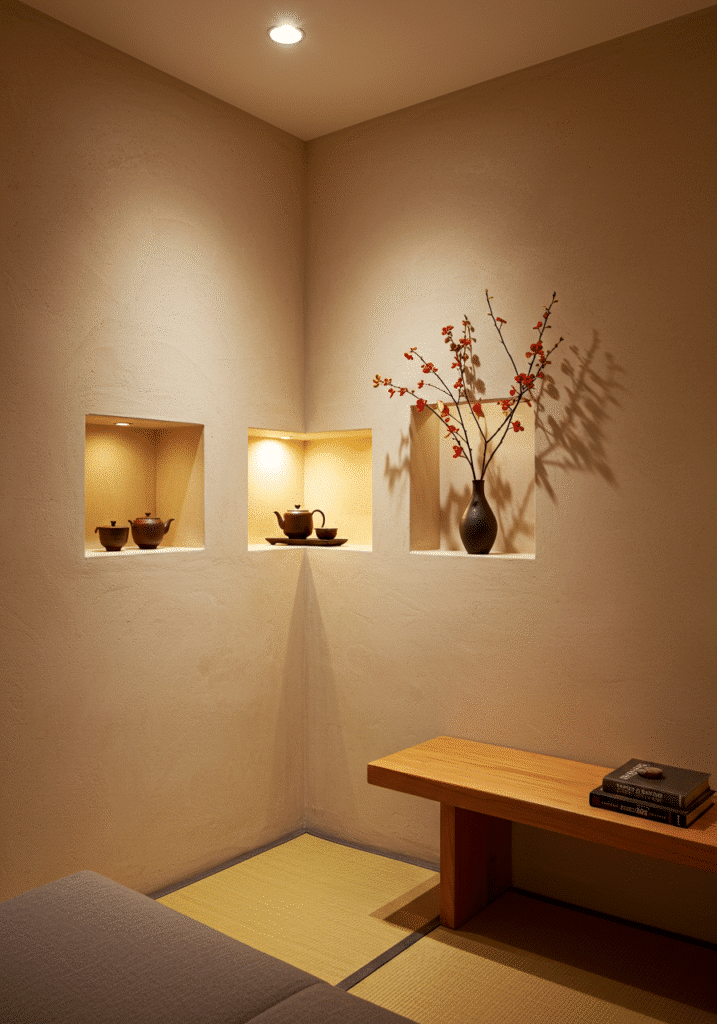
Instead of hanging everything on the wall, why not carve into it? Small alcoves or recessed shelves are a staple in Japanese homes. They’re places to pause, to display something thoughtful.
Create a mini display shelf in drywall, and add a dim light above it. Show off your matcha bowls, your travel finds, your tiny frog statue—whatever sparks joy.
It’s not about showing off. It’s about storytelling. Quietly.
15. Don’t Overmatch—Let it Feel Alive
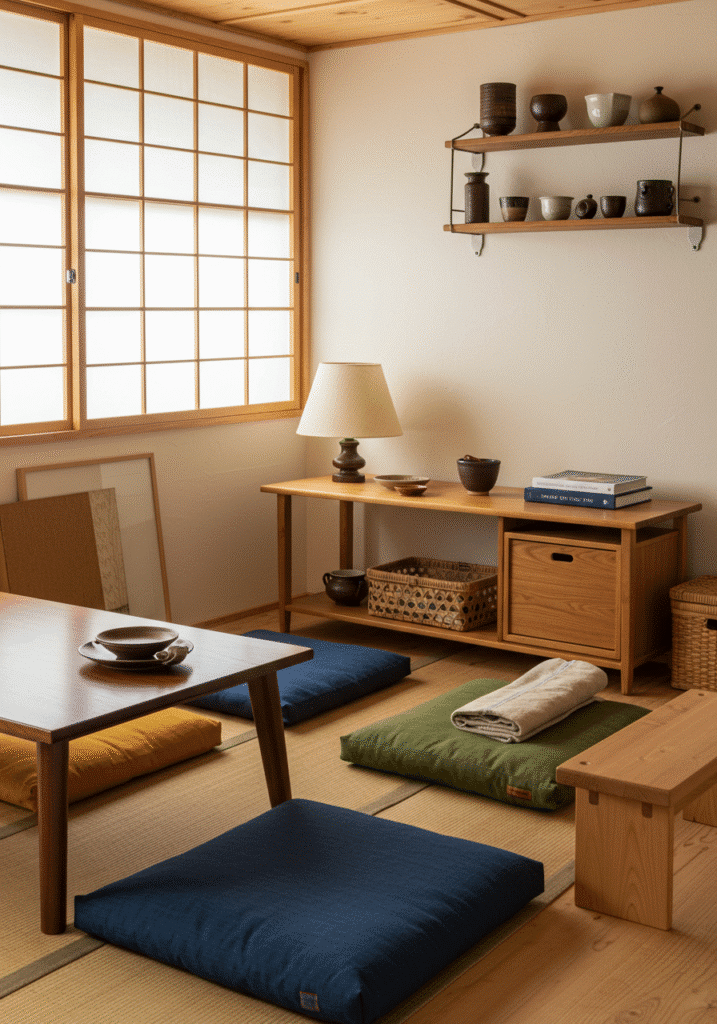
Japanese interiors rarely match perfectly. That couch cushion isn’t the same exact color as the rug. The wood tones might vary. And guess what? It feels real.
Mix warm and cool tones, blend old and new pieces. A vintage sake bottle next to a sleek IKEA stool? Works. Harmony doesn’t mean uniformity. It means balance.
Let it feel collected, not curated. Like someone lives here. Which… ya know… they do.
16. Add an Irori (Or Fake It)
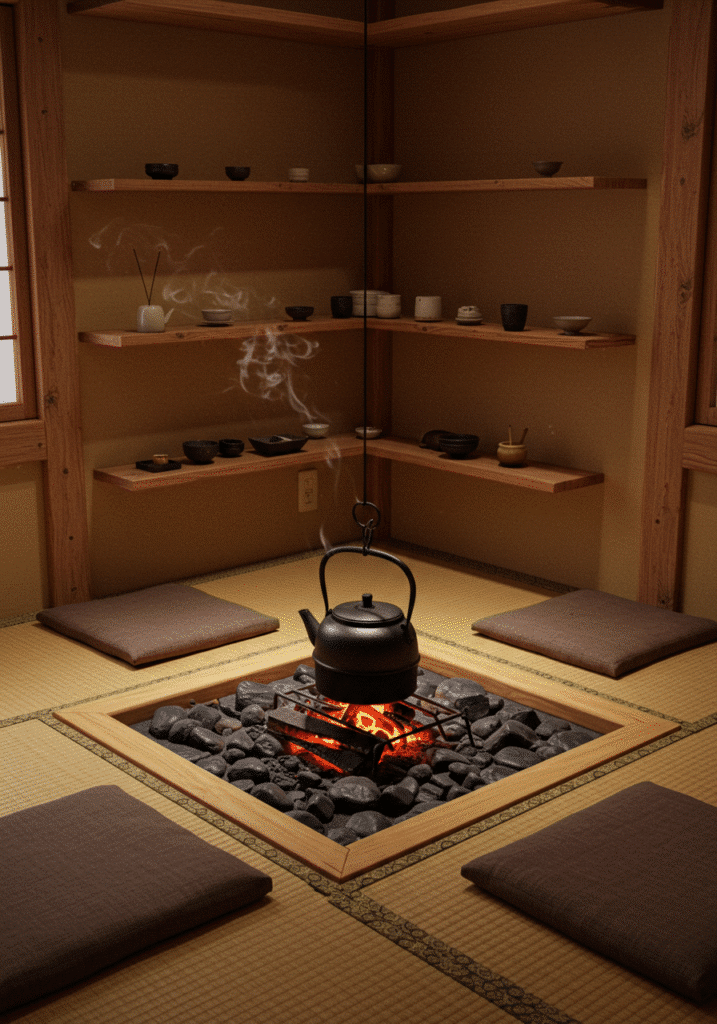
Traditionally, an irori is a sunken hearth where people cook and gather. You probably don’t have a fire pit in your tiny home, but you can recreate the feeling.
Get a low square table, surround it with floor cushions, and put a warm pendant light above. Eat meals there. Talk. Be present.
Even a small electric heater tucked underneath in winter adds the vibe. It’s all about gathering inward, together.
17. Mix Soft Textures with Hard Edges
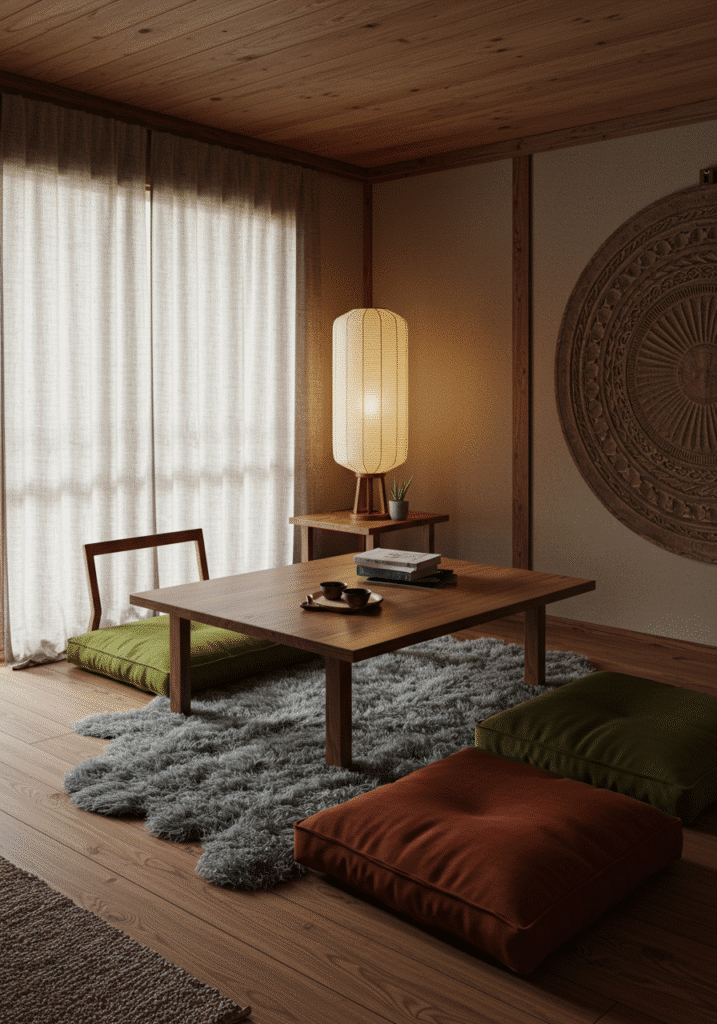
Wooden beams meet linen throws. Ceramic mugs sit on woven mats. Hard and soft dance together in Japanese interiors.
Use this mix in your tiny living room. A stoneware tray on a plush ottoman. A raw-edged wood table with soft fleece poufs. Your senses stay interested without feeling overwhelmed.
It’s tactile storytelling, basically. And your fingertips will thank you.
18. Wabi-Sabi: The Magic of Imperfection
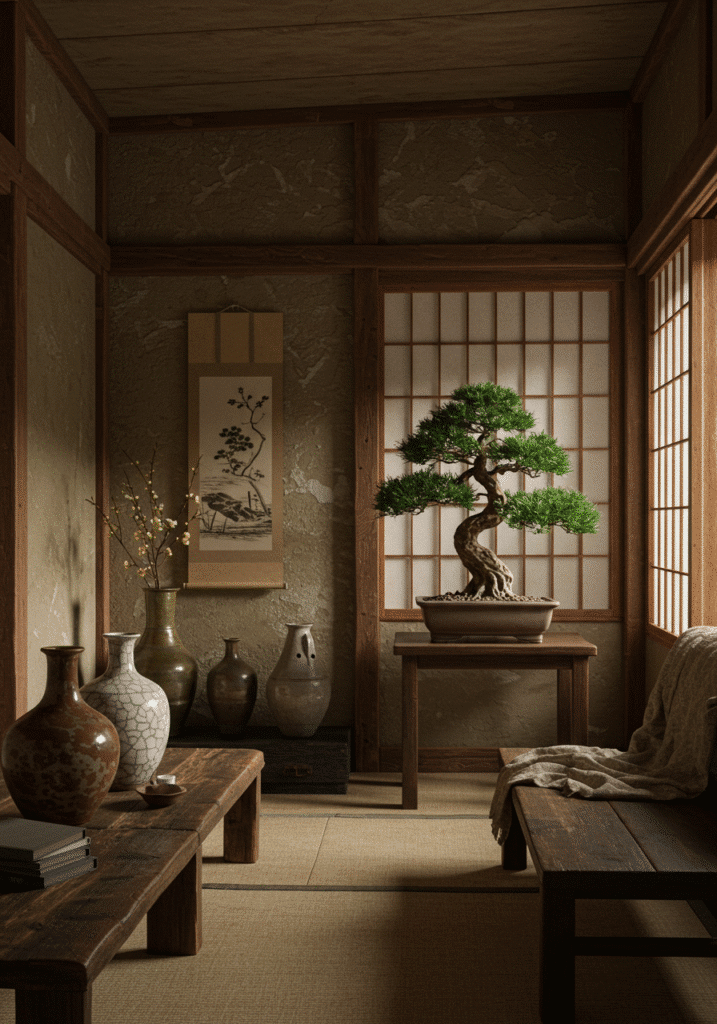
Not everything has to be sleek. In fact, imperfections are kinda the point. A scratched stool. A dented teapot. These aren’t flaws—they’re life marks.
Wabi-sabi is a design philosophy that honors the worn, the weathered, the real. It says: beauty is in the broken bits. That’s pretty poetic, right?
So go ahead and embrace that crack in your mug. That frayed rug. They’ve earned their place.
19. Small Tables with Big Personalities
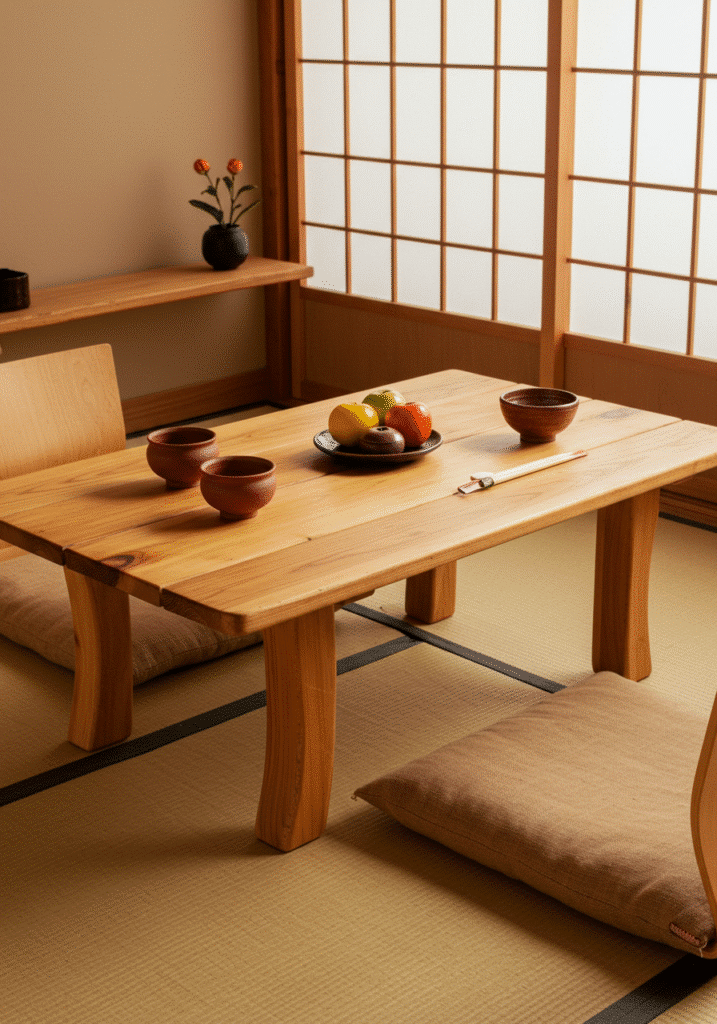
Instead of a big honkin’ coffee table, go with multiple tiny tables or stools. They’re easier to move, lighter on the eye, and more flexible.
One for your tea. One for your book. One just to look pretty. Mix materials—bamboo, rattan, light oak—and let them float in the space like petals.
Plus, they double as seating when friends come over. Or footrests. Or cat perches.
20. Zen Corners You Can Escape To

Sometimes your whole house can’t be zen. But a corner can. Designate a spot for breathing, stretching, or just zoning out.
Add a cushion, a salt lamp, a piece of driftwood. No screens allowed. Maybe a bell. Maybe nothing.
Tiny homes don’t need big spaces. They need meaningful ones.
21. Art That Breaths with You
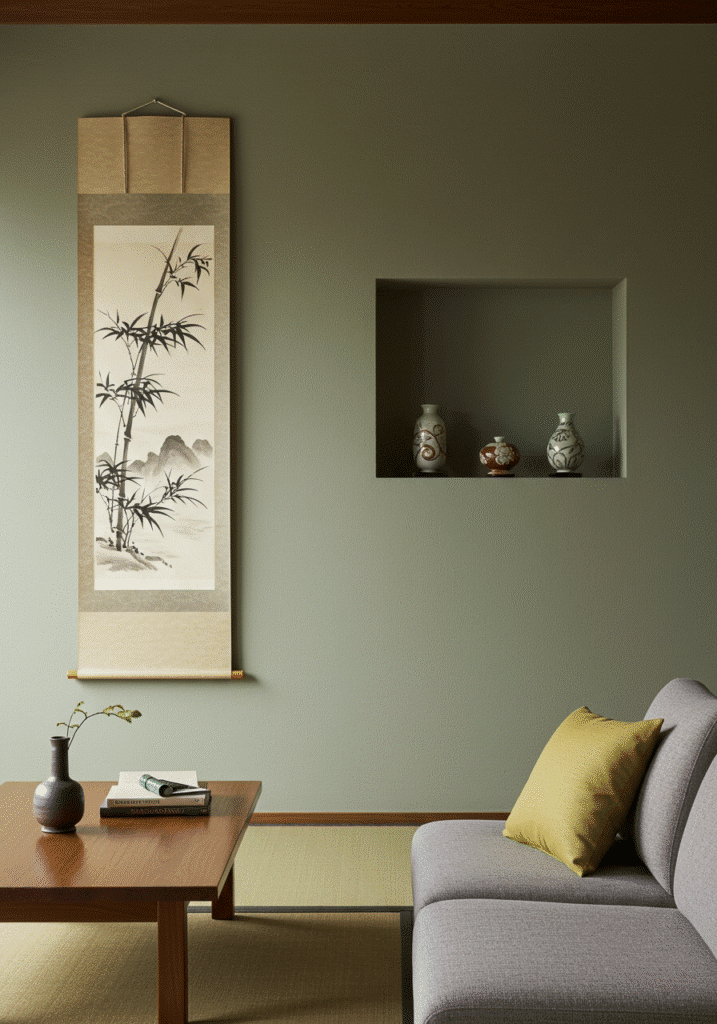
Instead of cluttered walls, go for one powerful piece. A sumi-e ink painting. A minimalist print. A photo of a wave crashing on black sand.
Let it have room around it. So your eyes can rest. So your heart can slow. A little drama, a little quiet.
Pick art that speaks softly—but deeply.
22. Scent the Room Like a Secret Garden

Japanese living spaces engage every sense. And smell is key. Burn incense, use essential oils, or keep cedarwood sachets tucked under cushions.
Scents like hinoki, yuzu, and sandalwood create a serene backdrop that lives in your memory. Not strong. Just enough to make you feel hugged by the room.
A tiny space smells big when done right.

Dorothy is a design lover on a mission to make every space feel inspired — from cozy living rooms to stylish home offices. With a flair for blending comfort, creativity, and practical ideas, she shares decor tips that breathe life into homes, workspaces, and everything in between. Whether you’re revamping a bedroom or refreshing your office nook, Dorothy’s thoughtful ideas help you design spaces that reflect your unique style.
